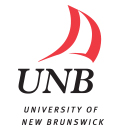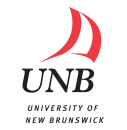Historical Sketch - Fredericton Campus
Principals (1820-1860) and Presidents of The University (1861-Present)
| James Somerville | 1820-1829 |
| Edwin Jacob | 1829-1860 |
| Joseph Hea | 1860-1861 |
| William Brydone Jack | 1861-1885 |
| Thomas Harrison | 1885-1906 |
| Cecil Charles Jones | 1906-1940 |
| Norman MacKenzie, C.C. | 1940-1944 |
| Milton F. Gregg, V.C. | 1944-1947 |
| A. Forster Baird | 1947-1948 |
| Albert Trueman, O.C. | 1948-1953 |
| C. William Argue (Acting) | 1953 |
| Colin B. Mackay, O.C., Q.C | 1953-1969 |
| James O. Dineen | 1969-1972 |
| Desmond Pacey (Acting) | 1972-1973 |
| John M. Anderson | 1973-1979 |
| Thomas J. Condon (Acting) | 1979-1980 |
| James Downey, O.C. | 1980-1990 |
| Robin L. Armstrong | 1990-1996 |
| Elizabeth Parr-Johnston | 1996-2002 |
| James F. O'Sullivan (Acting) | 1997 |
| John D. McLaughlin | 2002-2009 |
| H.E.A. Eddy Campbell | 2009 - Present |
Fredericton Campus History
As the American Revolutionary war drew to a close, thousands of Loyalists gathered in New York City to await transportation to homes in other British Colonies. Among these Loyalists were Charles Inglis, a former interim President of King’s College, New York (Columbia University); Benjamin Moore, later President of Columbia; and Jonathan Odell, minister, poet and pamphleteer. These men were the visionaries of their day. In the midst of war, privation and exile, they drew up a plan for the future education of their sons in the Nova Scotia wilderness. Recognizing that the new American nation would provide instruction only in revolutionary “Principles contrary to the British Constitution” and that the cost of an overseas education would be prohibitive, they urged the representatives of the British government to consider the “founding of a College… where Youth may receive a virtuous Education” in such things as “Religion, Literature, Loyalty, & good Morals…”
Initially, these gentlemen intended that the area of Nova Scotia have only one college. However, in 1784 when the Province of New Brunswick was created from a part of Nova Scotia, New Brunswickers began a clamour for their own school which led to the foundation of two of Canada’s oldest institutions of higher learning – King’s College, Windsor, Nova Scotia (now affiliated with Dalhousie University) and the academy which became the University of New Brunswick.
UNB began with a petition presented to Governor Thomas Carleton on 13 December 1785. Headed by William Paine, the seven memorialists asked Carleton to grant a charter of incorporation for an “academy of school or liberal arts and sciences,” which they maintained would result in many “public advantages and… conveniences.” In addition, the “principal Officers of disbanded Corps and other Inhabitants” in and around the provincial capital of Fredericton asked that the Governor reserve a substantial grant of land in support of this academy.
Despite the approval of Carleton, it was many months before the academy opened. During this period a draft charter was written, based on the 1754 Charter of King’s College, New York, urging that the college never “exclude or restrain any Person…of any religious Denomination, Sect or Profession…from equal…Liberties, Privileges, [or] Degrees”- a very liberal notion in the eighteenth century. Unfortunately, times were changing in New Brunswick and such sentiments seemed to recall the recent American Revolution. Therefore, while the academy had commenced operations by the 1790s, it functioned less as a college and more as a symbol of Carleton’s governmental policy for the promotion of twin tenets of the Anglican religion and the British Constitution. As the provincial leaders of the opposition dismissed the academy of as nothing but a “country school,” Carleton realized he must more actively and effectively offer its support. On 12 February 1800, over the signature of Provincial Secretary Jonathan Odell, the College of New Brunswick received a Provincial Charter, the first college in Canada to be so honored. It was intended that the academy would serve as the College’s preparatory school and that the two would be governed by a Common College Council drawn almost entirely from the ranks of a governmental hierarchy. As for the professors, they were all to be Anglicans.
For a number of years, the history of the future University continued to lie with academy. A series of masters came and went until 1811 when the Reverend James Somerville, an ex-patriate Scotsman, took the position of Principal Preceptor. There can be no question that Somerville, a graduate of the University of Aberdeen, was a superb teacher who provided the Council and New Brunswick with their first chance to have a real college. In 1820, Somerville, was formally named president of the College of New Brunswick and, in April 1822, he held the very first college classes in Fredericton. This development helped spur efforts to set the institution on a firmer footing. A new Charter for “Brunswick College” was proposed in 1823, asking for permanent and substantial funding directly from the King. Lieutenant Governor Sir Howard Douglas quickly threw his influence behind the scheme. Douglas viewed the welfare of the College to be of prime importance to the success of New Brunswick. To this end, he pressed for a Royal Charter and urged the erection of a fine stone building to house the institution.
Three designs for the building were submitted in 1825 to the Council, which selected that drawn J.E. Woolford. There was, of course, a good deal more involved in the transformation of the neglected College of New Brunswick into King’s College, Fredericton. Douglas spent the next four years keeping a wary eye on the growth of his “child. In 1826, having chosen the site for the building himself, Douglas laid the cornerstone. In December 1827, largely through Douglas’ efforts in Great Britain, King’s College, Fredericton, received a Royal Charter nearly identical to that granted to King’s College, Toronto. Before allowing the new Charter to take effect, the College of New Brunswick performed one final, official act, on 21 February 1828, by awarding degrees to its first and last three graduates.
On I January 1829, King’s College and the structure (now known as Sir Howard Douglas Hall, formerly referred to as the Old Arts Building) erected to house it were officially opened. In one way, King’s was a failure. In its thirty-year tenure it graduated fewer than 125 students, in large measure because its classical curriculum was not well-suited to the needs of New Brunswickers. Yet, it was at King’s that many of the courses offered in later years by the University of New Brunswick had their start. In 1834, for example, three of the professors proposed admitting “young men of good abilities and diligence” to a special, one-year course entitling each to a teacher’s certificate. Even after the creation of the Provincial Normal School this kind of university training continued sporadically and in various forms until the Faculty of Education emerged in the twentieth century.
It was also in the 1830s that King’s introduced “public lectures,” more familiar to today’s students as “extension courses”. These early lectures dealt with subjects such as geology, chemistry, physics and astronomy. Much to the disgust of one professor, James Robb, some of his lectures at the College were open to the general public, including the young women of Fredericton. Some years later, Mr. McMahon Cregan, an engineer from England who was brought to New Brunswick to conduct a survey for the European and North American Railway, offered “instruction of a really practical and useful character” in the field of engineering to students and non-students alike.
King’s spent several tumultuous periods in conflict with members of the New Brunswick Legislature. Ostensibly, they were arguing over the issues of the curriculum and religion but the real issue was probably the cost of higher education. Fortunately, King’s did have defenders, in particular, the elegant debater William Needham who, in the face of threats to burn down the College or to turn it into an agricultural school, made an impassioned speech that saved the institution from such ignominious fates. Through the efforts of Needham, Lieutenant Governor Sir Edmund Head and a few others, the Legislature was persuaded to reform rather than destroy the College. On 13 April 1859, the act creating the secular, provincial University of New Brunswick was passed.
At first, the UNB charter seemed to promise more than the University could deliver but, slowly, under the guidance and tutelage of several innovative professors, both the University’s attitude and curriculum blossomed. In 1880, UNB began offering a certificate to those women who performed well in entrance (matriculation) examinations, though women were not permitted to enrol at the University. In 1885 a brilliant young woman named Mary Kingsley Tibbits met head-on the University’s stricture against women and, in 1886, became UNB’s first, regularly admitted, woman student. The racial barrier had been broken earlier with the completely non-controversial entry of you Arthur St. George Richardson, a black who came to UNB via Bermuda and Saint John. Gradually, the University expanded its educational horizons. In 1887 the four-year program was introduced and in 1891 a Bachelor of Science degree was added to complement the traditional BA. Just after the turn of the century, when Cecil Charles Jones took over as Chancellor of the institution, whose title subsequently was changed to that of President, the foundations were laid for three major faculties: Law, Engineering and Forestry.
The post-World War I era brought the first great expansion of the physical facilities of the campus. In 1920, UNB consisted of the Sir Howard Douglas Hall (Old Arts Building), the Science Building, the small Observatory, a small gymnasium and the Dominion Entomological Laboratory. By 1931, Memorial Hall, a modern Library and a Forestry and Geology Building had been added. The first university residence was a gift from Lord Beaverbrook who, growing up in New Brunswick as William Maxwell Aitken, studied law, and over the succeeding years developed an increasing interest in the welfare of the university. Other buildings brought into being through his efforts and those of his family were the Lady Beaverbrook Gymnasium, Aitken House, the Faculty of Law building and the Aitken Centre. In 1947, his Lordship became the University’s Chancellor, to be succeeded by his son, Sir Max Aitken, in 1966 and in turn by Lady Violet Aitken, the wife of Sir Max, who served until 1993.
After World War II, returning veterans pushed registration to over 770 in 1946, almost double the number enrolled in 1941. With this increased student population came a commensurate increase in faculty and course offerings, and a surge of building activity from 1953 to 1977 that transformed the campus. The year 1964 brought three important developments. Teachers’ College (the old Provincial Normal School) was relocated on the campus, to become incorporated into an enlarged Faculty of Education in 1973; St. Thomas University also relocated on campus, moving from Chatham and affiliating with UNB; and a second UNB campus was established in Saint John.
UNB reached the end of its second century as a major provincial and national institution, offering a wide range of graduate and undergraduate programs in administration, arts, computer, science, education, engineering, forestry, law, nursing, physical education and science: the University enters its third century proudly treasuring its past and eagerly facing the challenges of the future.


